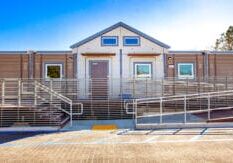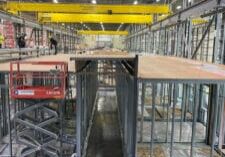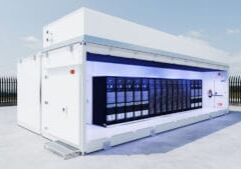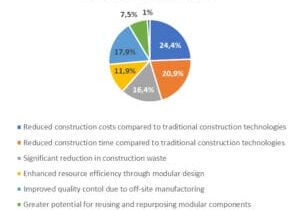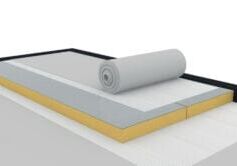Seguridad y soberanía en el Ártico: El papel de las estructuras modulares

Ali Salman es Director de Marketing Estratégico de Crecimiento y Ventas de Northgate Industries.
El Ártico, antaño considerado una región remota y en gran medida inaccesible, se ha convertido en un punto crítico de interés geopolítico. A medida que el cambio climático acelera el deshielo, el Ártico está revelando nuevas rutas de navegación y vastos recursos naturales sin explotar, lo que lo convierte en un foco de interés estratégico mundial. Este artículo profundiza en la dinámica geopolítica de la seguridad del Ártico, especialmente para Canadá y la OTAN, al tiempo que explora cómo las estructuras modulares pueden desempeñar un papel fundamental en la mejora de la seguridad y la soberanía en esta región cada vez más disputada.
La importancia estratégica del Ártico
Según el Servicio Geológico de Estados Unidos (USGS), el Ártico alberga aproximadamente el 13% de las reservas mundiales de petróleo y el 30% de las de gas natural por descubrir. El deshielo ha hecho más accesibles estos recursos, despertando el interés y la competencia de los Estados árticos y no árticos por igual. Para Canadá, el Ártico no es sólo una zona rica en recursos, sino también un componente esencial de su soberanía nacional. El marco político del gobierno canadiense para el Ártico subraya la importancia de afirmar la soberanía y mantener una fuerte presencia en la región para salvaguardar sus intereses nacionales.
La OTAN también ha reconocido la creciente importancia del Ártico en su concepto estratégico. La reciente atención prestada por la Alianza al Ártico responde a las crecientes actividades militares de Rusia, que ha estado reforzando su presencia en el Ártico con nuevas bases, rompehielos y sistemas avanzados de armamento. Las ambiciones de Rusia en el Ártico, especialmente su control sobre la Ruta Marítima Septentrional (NSR), plantean importantes retos para la seguridad de la región, suscitando la preocupación de los miembros de la OTAN ante la posibilidad de un conflicto.
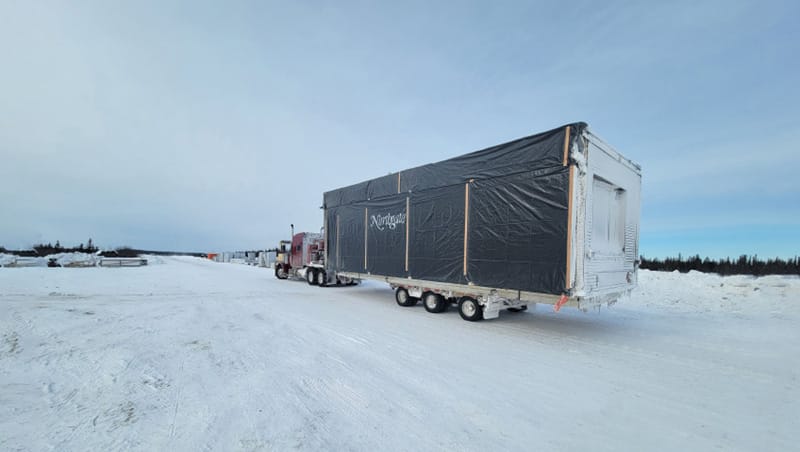
Northgate Industries transporta unidades modulares por terreno ártico.
China, aunque no es un Estado ártico, también ha manifestado su interés por el Ártico, considerándose un "Estado cercano al Ártico" y tratando de ampliar su influencia mediante iniciativas como la Ruta de la Seda Polar. La creciente presencia de China en el Ártico, que incluye inversiones en infraestructuras y asociaciones con Estados árticos, ha añadido otro nivel de complejidad a la dinámica de seguridad de la región.
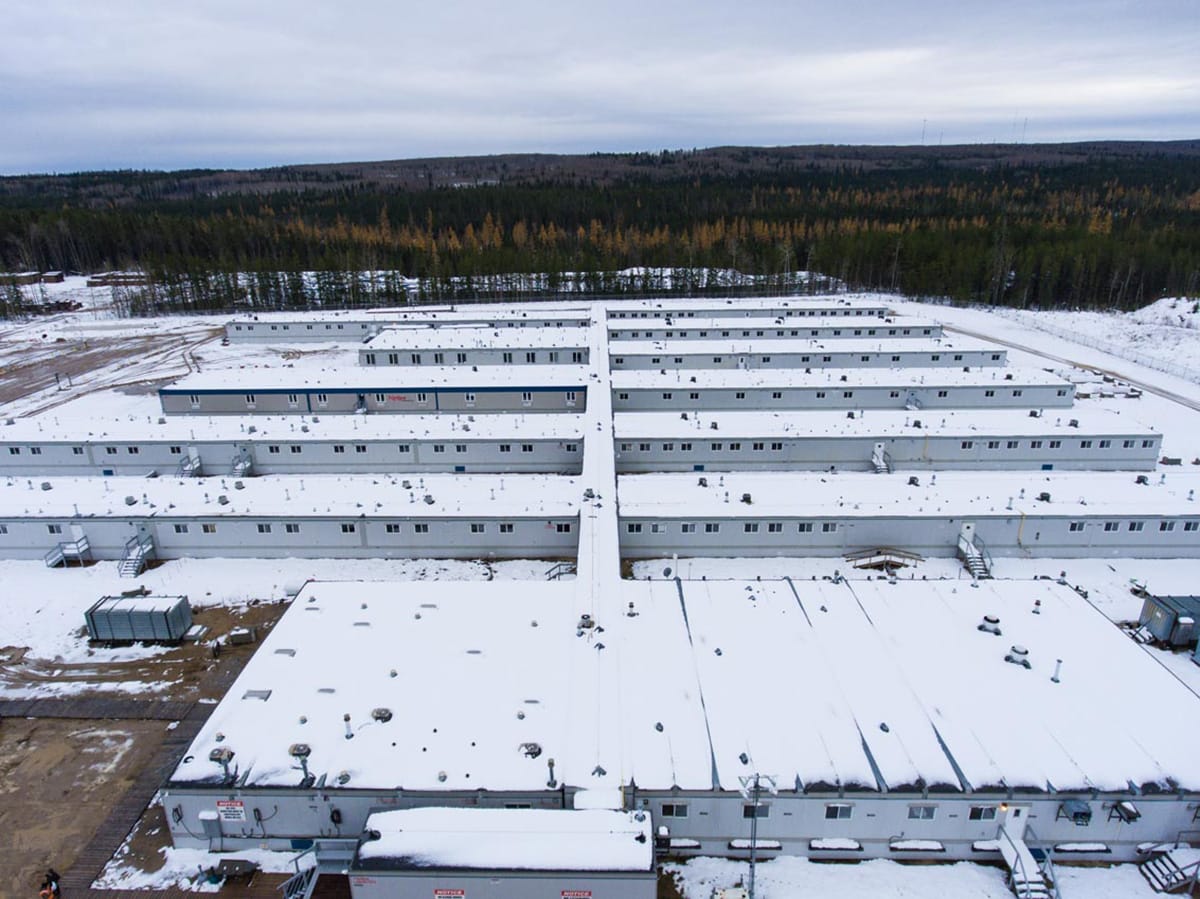
Durante el ejercicio Trident Juncture 2018, la OTAN empleó unidades modulares para proporcionar apoyo logístico en el difícil entorno del Ártico noruego.
La importancia estratégica del Ártico
Aunque los retos geopolíticos del Ártico son inmensos, el entorno físico de la región presenta su propio conjunto de obstáculos. La dureza del clima, las condiciones meteorológicas extremas y las dificultades logísticas dificultan el establecimiento y mantenimiento de una presencia sostenida en el Ártico. En este contexto, las estructuras modulares ofrecen una solución práctica y eficaz, proporcionando la flexibilidad, rapidez y resistencia necesarias para las operaciones en un entorno tan remoto y hostil.
Despliegue rápido y flexibilidad
Las estructuras modulares son prefabricadas y pueden desplegarse rápidamente en lugares remotos, una ventaja crucial en el Ártico, donde la construcción tradicional se ve obstaculizada por el clima extremo y las temporadas de construcción limitadas. Northgate Modular, líder en construcción modular, ha demostrado que las unidades modulares pueden montarse entre un 30% y un 50% más rápido que los métodos tradicionales, lo que las hace ideales para establecer rápidamente una presencia en el Ártico.
Escalabilidad y adaptabilidad
Las estructuras modulares son intrínsecamente escalables, lo que permite la ampliación gradual de las instalaciones según las necesidades. Esta flexibilidad es especialmente beneficiosa para las operaciones militares y de seguridad, en las que el tamaño y el alcance de las misiones pueden cambiar rápidamente. La capacidad de reconfigurar o reubicar unidades modulares con relativa facilidad garantiza que las operaciones puedan adaptarse a las cambiantes condiciones geopolíticas y medioambientales.
Sostenibilidad y eficiencia
El entorno ártico exige prácticas sostenibles, y las estructuras modulares pueden diseñarse con sistemas energéticamente eficientes que reduzcan la huella de carbono de las operaciones. El uso de paneles aislantes y fuentes de energía renovables puede reducir significativamente los costes de calefacción, un factor importante en el Ártico. Según el Arctic Institute, estos diseños energéticamente eficientes pueden reducir el consumo de energía hasta un 40%, lo que hace que las estructuras modulares sean viables tanto desde el punto de vista económico como medioambiental.
Relación coste-eficacia
El ahorro de costes asociado a la construcción modular es sustancial, especialmente en el Ártico, donde los retos logísticos del transporte de materiales y mano de obra pueden disparar los costes. Según un estudio de McKinsey & Company, la construcción modular puede reducir los costes hasta un 20% en comparación con los métodos tradicionales. Este ahorro es especialmente importante para los organismos militares y de seguridad que operan en el Ártico, donde los presupuestos suelen verse limitados por los elevados costes de logística e infraestructura.
Casos prácticos: Estructuras modulares en acción
Fuerzas Armadas Canadienses (CAF)
Las Fuerzas Armadas canadienses han utilizado estructuras modulares en varias operaciones en el Ártico, demostrando sus ventajas prácticas. La instalación naval de Nanisivik, en la isla de Baffin, es un ejemplo clave. Esta instalación, que sirve de apoyo a las operaciones de la Marina Real Canadiense en el Ártico, se construyó utilizando métodos modulares, lo que permitió un despliegue rápido y garantizó que la estructura pudiera soportar las duras condiciones del Ártico. La instalación es un centro logístico esencial que permite a Canadá mantener una presencia continua en la región.
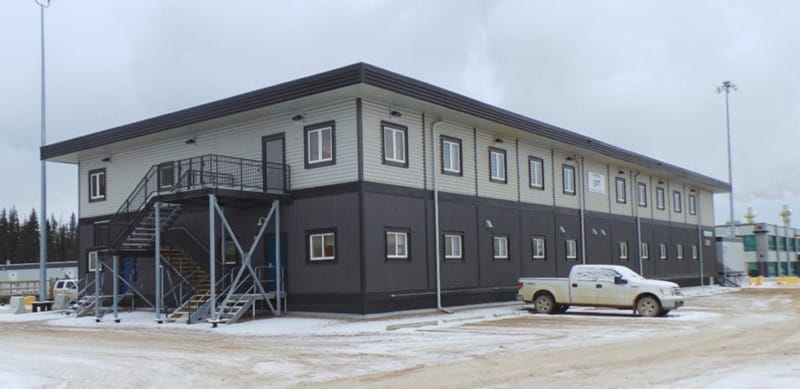
Operaciones de la OTAN
La OTAN también ha reconocido el potencial de las estructuras modulares para mejorar sus capacidades operativas en el Ártico. Durante el ejercicio Trident Juncture 2018, la OTAN empleó unidades modulares para proporcionar apoyo logístico en el desafiante entorno ártico noruego. Este ejercicio puso de relieve la adaptabilidad y resistencia de la construcción modular, mostrando su valor para apoyar los objetivos estratégicos de la OTAN en la región.
Agencias de seguridad
Más allá de las aplicaciones militares, las estructuras modulares son inestimables para otros organismos de seguridad encargados de vigilar y responder a las amenazas en el Ártico. La Guardia Costera canadiense, por ejemplo, ha utilizado unidades modulares para apoyar las operaciones de búsqueda y rescate en todo el Ártico. Estas estructuras proporcionan refugios fiables y de despliegue rápido, garantizando que el personal disponga de la infraestructura necesaria para responder eficazmente a las emergencias.
Implicaciones geopolíticas de la seguridad en el Ártico
El Ártico se está convirtiendo en una región cada vez más disputada, con importantes implicaciones para la seguridad mundial. El creciente interés de Rusia y China, combinado con los vastos recursos naturales y las rutas marítimas estratégicas de la región, ha transformado el Ártico en un posible foco de conflictos internacionales. Para Canadá y la OTAN el reto consiste en desarrollar una estrategia de seguridad que pueda contrarrestar eficazmente estas amenazas manteniendo al mismo tiempo la estabilidad en la región.
El papel de las estructuras modulares en esta estrategia está claro: proporcionan la infraestructura necesaria para establecer y mantener una presencia en el Ártico. Sin embargo, las estructuras modulares son sólo un componente de un marco de seguridad más amplio que debe incluir también la preparación militar, el compromiso diplomático y la cooperación internacional.
A medida que el Ártico siga calentándose y sus recursos se hagan más accesibles, la necesidad de un enfoque coordinado y global de la seguridad en la región no hará sino aumentar.
Las estructuras modulares, con su capacidad para desplegarse rápidamente y adaptarse a condiciones cambiantes, constituirán un elemento clave de esta estrategia, permitiendo a Canadá y a la OTAN mantener una presencia fuerte y adaptable en el Ártico.
Conclusión
El cambiante panorama geopolítico del Ártico exige soluciones innovadoras para los complejos retos de seguridad. Para Canadá y la OTAN el mantenimiento de la soberanía y la seguridad en el Ártico no es sólo una cuestión de interés nacional sino un componente esencial de la estabilidad mundial.
Más de Modular Advantage
Resia: Romper todas las reglas
Resia Manufacturing, una división de la empresa estadounidense Resia, ofrece ahora componentes prefabricados para baños y cocinas a sus socios industriales. Su planta de fabricación híbrida produce componentes (módulos) de baño y cocina más precisos, más rápidamente y a menor coste que la construcción tradicional. Así es como lo hace Resia Manufacturing.
Cómo innova LINQ Modular para llevar lo modular al mercado de los EAU y más allá
LINQ Modular, con una oficina y tres plantas de fabricación en Dubai, es una empresa modular con sede en Emiratos Árabes Unidos. La empresa tiene una misión: abrir con modulares los mercados de la vivienda y la construcción en la zona del Consejo de Cooperación del Golfo (CCG).
ModMax: redefinir la construcción modular con confianza y precisión
ModMax nació de la frustración ante cinco problemas persistentes en la construcción modular: Cuellos de botella en los permisos. Retrasos en la producción. Diseños rígidos. Desconexión entre "la oficina" y el terreno. Falta de transparencia y comunicación.
LifeArk: Viviendas resistentes a catástrofes con plástico reciclado y tecnología centenaria
Wee compara las viviendas de LifeArk con las neveras Yeti, ya que su construcción es similar. Cada componente tarda entre 15 y 20 minutos en fabricarse, tiene un valor R de 40 e incluye ranuras y canales moldeados para el cableado, la fontanería, los rociadores contra incendios y otros servicios.
Construir el futuro de la infraestructura modular Edge
El mercado de centros de datos periféricos se está expandiendo rápidamente, impulsado por el aumento de las cargas de trabajo de IA, la adopción de IoT y la necesidad de potencia de cálculo localizada. En estos entornos, la sostenibilidad, la escalabilidad y la fiabilidad no son negociables. La refrigeración es uno de los retos más complejos para los operadores y uno de los factores más decisivos para el éxito a largo plazo.
Aceleración de la construcción en acero ligero: Un flujo de trabajo digital semiautomatizado para proyectos a pie de obra
Para los profesionales de la construcción, el mensaje es claro. Adoptando la semiautomatización y la digitalización, las empresas pueden entregar los proyectos con mayor rapidez, precisión y rentabilidad, al tiempo que refuerzan la colaboración entre los equipos. No se trata de sustituir a las personas por máquinas, sino de dotarlas de mejores herramientas y procesos.
Por qué están ganando impulso los centros de datos modulares
La inteligencia artificial, la informática de alto rendimiento y las aplicaciones periféricas superan los límites de los centros de datos tradicionales. Tardan años en construirse, a menudo tienen problemas con las cargas de trabajo de alta densidad y no están optimizados para implementarse cerca de los usuarios finales. Las plataformas de centros de datos modulares están diseñadas para hacer frente a estos retos, ofreciendo flexibilidad y escalabilidad para adaptarse a las tecnologías en evolución, al tiempo que abren nuevas oportunidades para la industria de la construcción modular.
La innovación en la cadena de suministro en acción: 5 hábitos que todo líder modular debe practicar
Aplicando estos principios a las prácticas de la cadena de suministro -planificación colaborativa, compras estratégicas, modelización de escenarios, herramientas digitales y previsiones transparentes-, los líderes de la construcción pueden construir cadenas de valor que no sólo sean eficientes y ágiles, sino verdaderamente innovadoras.
Exploración del papel de la construcción modular integrada (MiC) en la promoción de los principios de la ciudad circular: una encuesta sobre las perspectivas de las partes interesadas
Los resultados de la encuesta destacan el importante potencial de la construcción modular integrada (MiC) para avanzar en el desarrollo de ciudades circulares. Al reducir costes, acelerar los plazos de construcción y minimizar la generación de residuos, la MiC ofrece un enfoque prometedor para el desarrollo urbano sostenible.
El uso de sellantes y adhesivos a base de MS POLYMER™ en la construcción modular
Estos productos combinan flexibilidad y recuperación elástica con una excelente adherencia a distintos sustratos y ya han demostrado su utilidad en la construcción tradicional. Ahora es el momento de ponerlos en práctica en la industria de la construcción modular.




